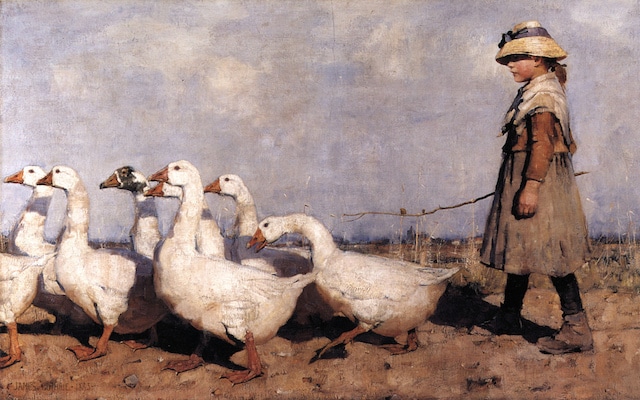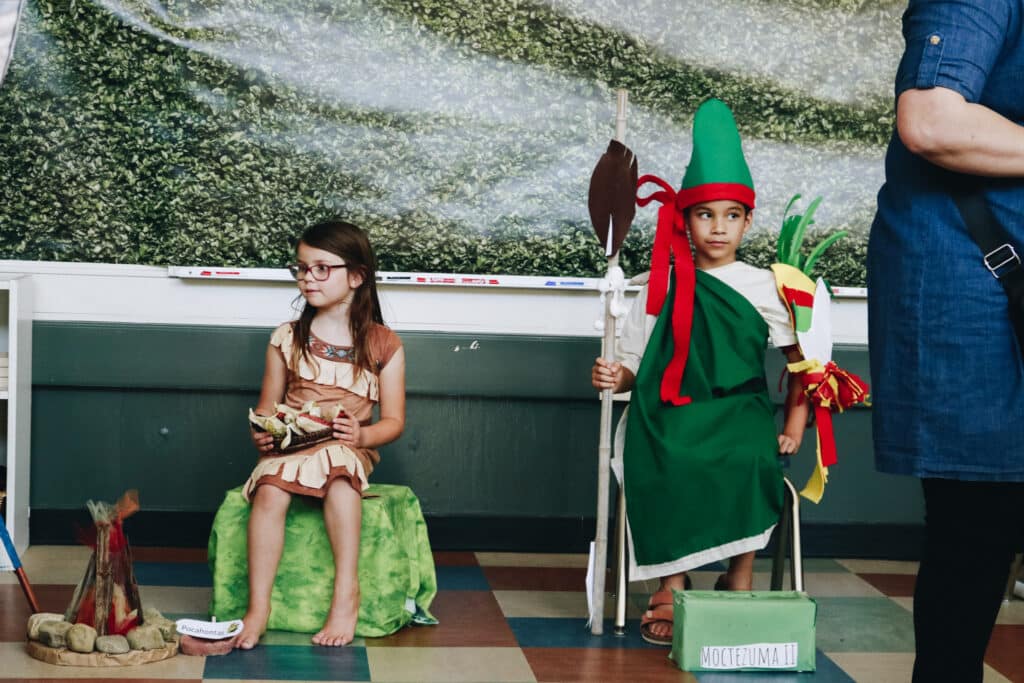
To Pastures New (1883) by Sir James Guthrie, Public Domain
{image credit: freeparking}
Our favorite book reviewer, SLOCA librarian and parent Emily Ferrarini, is back with a few more excellent literature suggestions for just-for-fun reading. Perhaps you have a bookworm who can’t get enough, or a reluctant reader you’re trying to entice with interesting options, or maybe you’re looking for a read-aloud that relates to this year’s history… read on!
If you missed Emily’s first set of reviews earlier in the year, you can read them here. And of course you can always find many more quality literature choices on our Supplemental Literature list for Year 2 – The Middle Ages, which can be found on the parent resources page of our website.

/ironring.jpg)
{image credit: amazon.com}
The Iron Ring
by Lloyd Alexander
When picking out supplementary literature to read with my children, I sometimes like to look to the peripheries. We have been learning so much this year about Europe in the Middle Ages, but sometimes it’s fun to take a step back, and see what might have been going on in other regions during the same time period. In The Iron Ring, Lloyd Alexander takes us to a fantastical kingdom in India. Alexander is an author I return to again and again. He has such a gift for drawing inspiration from the mythology and culture of a particular region, while weaving his own tale into that setting. The Iron Ring opens with young King Tamar, awakened in the middle of the night by a surprise visitor, the mysterious King Jaya. King Jaya challenges Tamar to a game of dice. At first Tamar seems to be winning, but his luck turns, and the young king loses. Tamar is bound by honor to serve at the behest of King Jaya. An iron ring is placed on his finger as a symbol of his indebtedness. When Tamar wakes up the next morning, he is surprised to learn that no one in his palace remembers the visit of King Jaya. The iron ring, however, remains. Although the apparent use of sorcery makes all of his advisors nervous for his safety, Tamar is an honorable king. He heads off on a quest to find the elusive Jaya, and along the way, encounters magical beings, strange and funny characters, and even a love interest. This adventure shares a theme with 1,001 Arabian Nights – a ruler whose eyes are opened to the plight of the underprivileged in his kingdom. It also invites comparisons with the noble and honorable principles of the knights. This lovely story utilizes complex language to describe the caste system and other important elements of Indian culture.
/krakow.jpg)
{image credit: amazon.com)
The Trumpeter of Krakow
by Eric P. Kelly
The next book, which won a Newbery Medal in 1929, turns our attention to medieval Poland. The Trumpeter of Krakow involves the Mongol invasion of the city of Krakow in the 13th century. It takes its name from a historical event, in which a young patriot, sounding his warning trumpet from a church balcony, is silenced by the arrow of the invading enemy. Ever since that event, trumpeters in Poland stop at the same point in the song, as they sound their trumpets four times on the hour, signaling that all is well. This book offers a glimpse into the lives of those affected by the dramatic expansion of Mongol empire. The terror wrought by the invaders is palpable: “The Tartars came through the world like a horde of wild beasts. They left not one thing alive, nor one green blade of wheat standing. Brave they were as lions, courageous they were as great dogs, but they had hearts of stone and knew not mercy, nor pity, nor tenderness…” This is a beautifully written book, filled with adventure and excitement, which will give young readers a vivid picture of Poland in the late middle ages. The elevated vocabulary – more common in children’s literature in 1929 – makes it an excellent book to read aloud.
/goosegirl.jpg)
{image credit: amazon.com}
The Goose Girl
by Shannon Hale
In The Goose Girl, Shannon Hale brings new life and depth to one of Grimm’s somewhat odd fairy tales. The princess Anidori can communicate with birds, but she is not quite so gifted when it comes to people. She is painfully awkward, and has a difficult time asserting herself in her royal family. She lives in the shadow of her imposing regal mother. When the journey to the far country of Bayern turns into an unexpected series of trials, Ani is forced to grow in strength and determination to face these challenges. As she is betrayed by her friend, unjustly dethroned, rejected, and hunted down, she slowly sheds her insecurities, and learns to depend on her own grit. She disguises herself as the goose girl, and forges new friendships without the benefit of regal airs. With the help of these new allies, and the power of her mysterious abilities, Anidori eventually gathers the resolve to make her stand against the traitors, and reclaim her rightful crown. The Goose Girl is an excellent read. Shannon Hale’s descriptions are eminently relatable – young readers are sure to identify with Ani as she finds the courage to be herself. Numerous times while reading it out loud, I had to put the book down in order to laugh, but I never had to put it down because the plot was lagging. The Goose Girl is the first of the series The Books of Bayern, and is followed by Enna Burning, River Secrets, and Forest Born, respectively. Also be sure to check out Hale’s Newbery Award winner, Princess Academy.

Wonderful! Thank you Emily, for taking the time to read these selections and then write about them for us. They all sound fantastic!
SLO Classical Academy is not affiliated with any of the above mentioned websites, businesses, or individuals.











